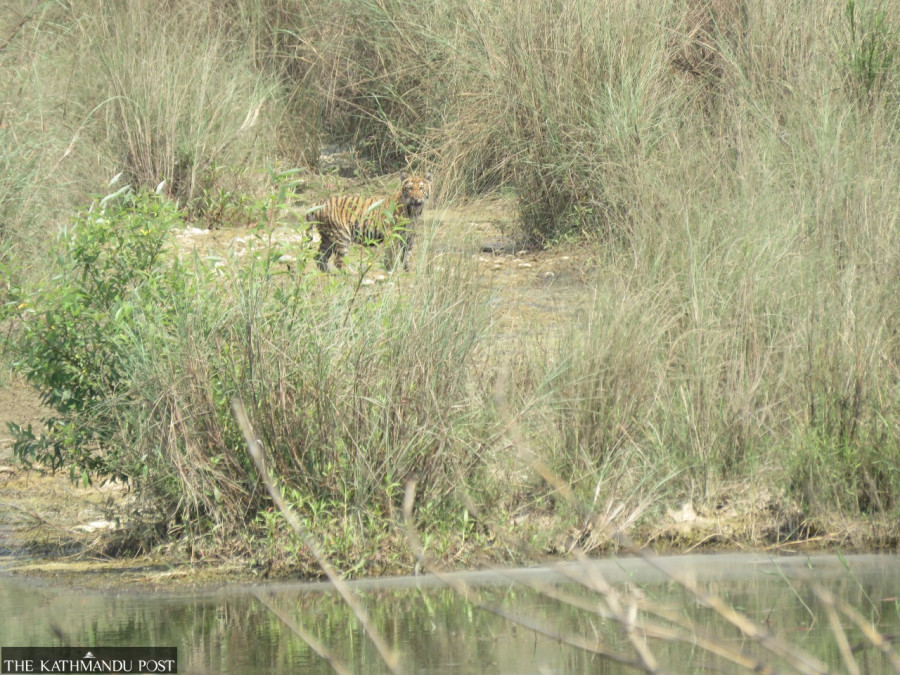Lumbini Province
Bardiya park sees increase in tourist numbers
The onset of high season for tiger watching and dwindling Covid-19 cases are the reasons behind the increase, tourism entrepreneurs say.
Kamal Panthi
Naresh Shrestha of Tripureshwor in Kathmandu visited Bardiya National Park last week with his friends for a tiger watching safari. His happiness knew no bounds when he spotted a tiger in the park on the second day of his visit.
Gyanendra Joshi from Doti too visited Bardiya that week to watch tigers.
“I saw a female tiger with her cubs at the Baghaura Phant area and a male tiger at Balkune. I am elated,” said Joshi.
Like Shrestha and Joshi, many nature lovers—both domestic and foreign—are thronging to Bardiya National Park, a major tiger habitat in the country, in hopes of seeing the big cat. According to conservationists and nature guides, tigers are generally spotted in the national park’s forest during the onset of summer.
Bardiya National Park is seeing an increase in tourist numbers as it is a high season for jungle safaris and the country is witnessing a decline in Covid-19 cases, according to tourism entrepreneurs.
“Tourists visiting the national park return home happily as most of them have been able to spot tigers in the park forests in the past 10 days,” said Ramji Babu Thapa, a tourism entrepreneur in Bardiya.
According to Anuram Chaudhary, a nature guide, with the rise in temperature in the Tarai region, tigers frequently come to the stream in the Tinkune area to quench their thirst.
“Around 80 percent of all visitors have been able to see tigers during jeep safaris in the past week or so,” Chaudhary said. He added that tigers are often spotted at Tinkune, Geruwa, Kingfisher, Bagudaphanta, Babai Valley and Chure areas of the national park and in the Khata biological corridor just outside the park.
As per the tiger census 2018, the country has a total 235 tigers. The Bardiya National Park, covering an area of 968 square kilometres, is home to 87 endangered Royal Bengal tigers. Bardiya National Park and India’s Sathyamangalam Tiger Reserve jointly won this year’s TX2 Award for doubling their tiger populations since 2010.
Bardiya National Park, which remained closed for months due to the Covid-19 pandemic, reopened to visitors on October 18, 2021.
“Domestic tourists from across the country are visiting the national park to see tigers. The number of foreign tourists is also on the rise,” said Ram Bahadur Shahi, a tourism entrepreneur.
The increase in tourist flow comes as a relief to local tourism entrepreneurs and business operators, who had to close their businesses for months due to the pandemic.
“Nature lovers, mainly from Kathmandu, Pokhara, Butwal, Dang and Dhangadhi, among other places, have booked rooms in our resort. They prefer to visit Bardiya as they can easily see tigers here,” said Dharmaraj Ghimire, a resort owner in the park area.
According to the national park administration, around 16,000 tourists—both domestic and foreign—visited the Bardiya National Park in the last fiscal year of 2020/21. More than 10,000 people visited the park by February in the current fiscal year.




 13.12°C Kathmandu
13.12°C Kathmandu












